Best Used Mid-Size Sedans
Best-used mid-size sedans: blending affordability with luxury, performance, and dependability.
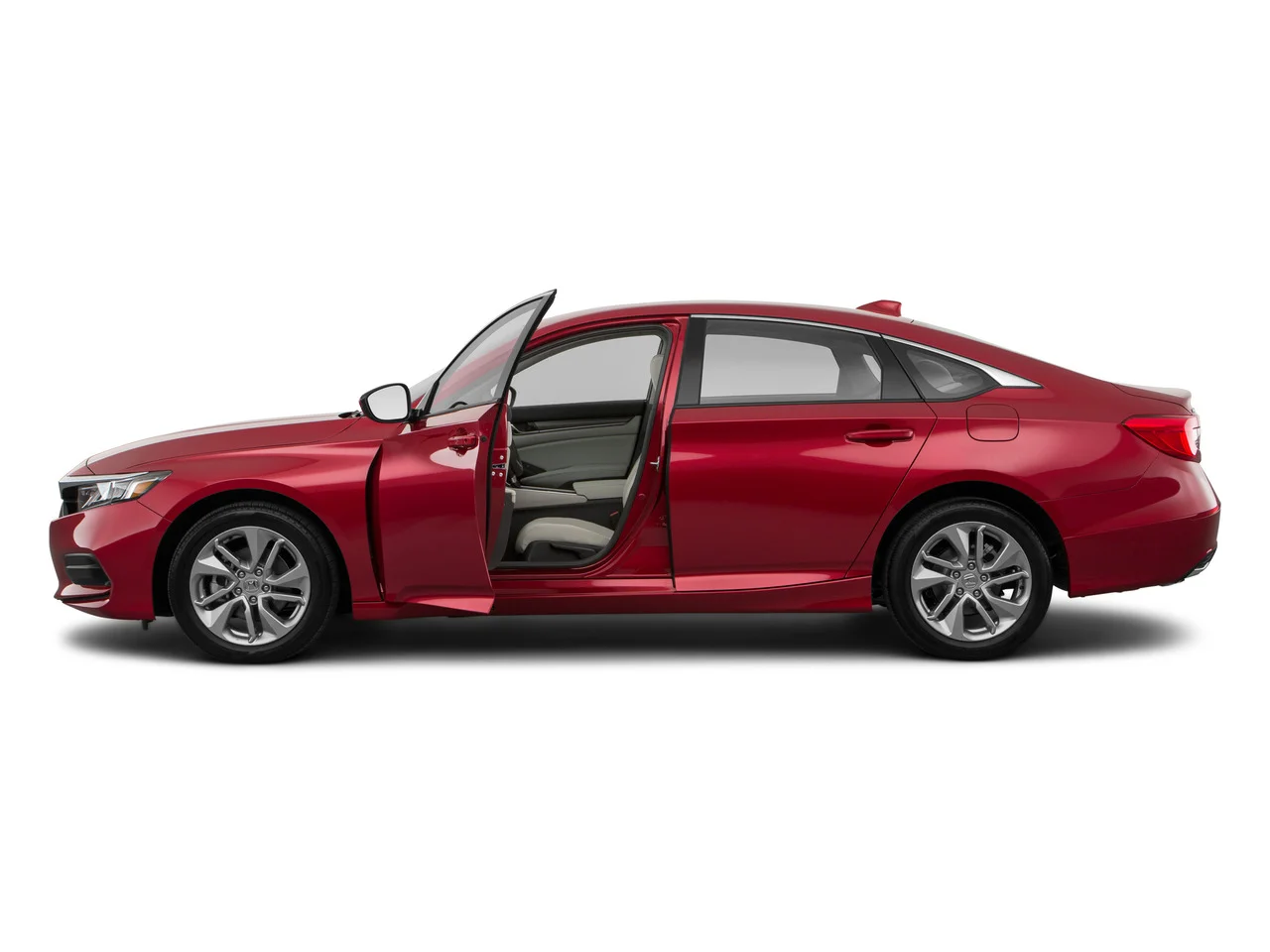
2018 Honda Accord
It’s truly remarkable how Honda has consistently perfected the Accord over the years. The Honda Accord is as practical as a mid-size sedan could get while remaining extremely satisfying to drive. What’s even more impressive is that it accomplishes all of this within a safe, reasonably priced package that boasts decades of proven reliability.
But with the 10th generation (2018-2022) of the Accord coming in, Honda added a sleek outside appearance and a more upscale (near luxury-like) interior with more modern tech to the winning mix. Not to mention the available fuel-sipping hybrid powertrain. For these reasons, the 2018 Accord stands out as our preferred choice among used Honda Accords.
Beyond its hybrid offering, this generation of the Accord provides two direct-injected turbocharged four-cylinder engine options. The base model features a 192 hp 1.5-liter engine, while an upgrade is available with a more potent 252 hp 2.0-liter engine. These turbocharged powertrains are paired with a continuously variable automatic (CVT) and a 10-speed automatic transmission, respectively. Notably, the Sport trim with the larger engine retains the beloved six-speed manual transmission.
Pros:
- Balance of practicality and enjoyable driving experience.
- Comprehensive standard equipment package
- Surprisingly fuel efficient
- Striking and bold exterior design.
Cons:
- Limited interior storage capacity
- Some Rear blind spots
- Lower trim levels may experience noticeable noise levels
Car Key Points:
- 10th generation (2018-2022)
- Hybrid offers 47 MPG combined
- Standard Driver-Assistance Features
- A top Safety Pick
- Saves the Manual (up till 2020)
- Athletic chassis
17-inch alloy wheels
LED exterior lighting
Automatic high beams
Keyless go
Dual-zone automatic climate control
height-adjustable driver seat
rearview camera
7-inch touchscreen
driver information display
Bluetooth
Four-speaker audio system
Adaptive cruise control
Lane departure warning and control
Forward collision warning
Automatic emergency braking
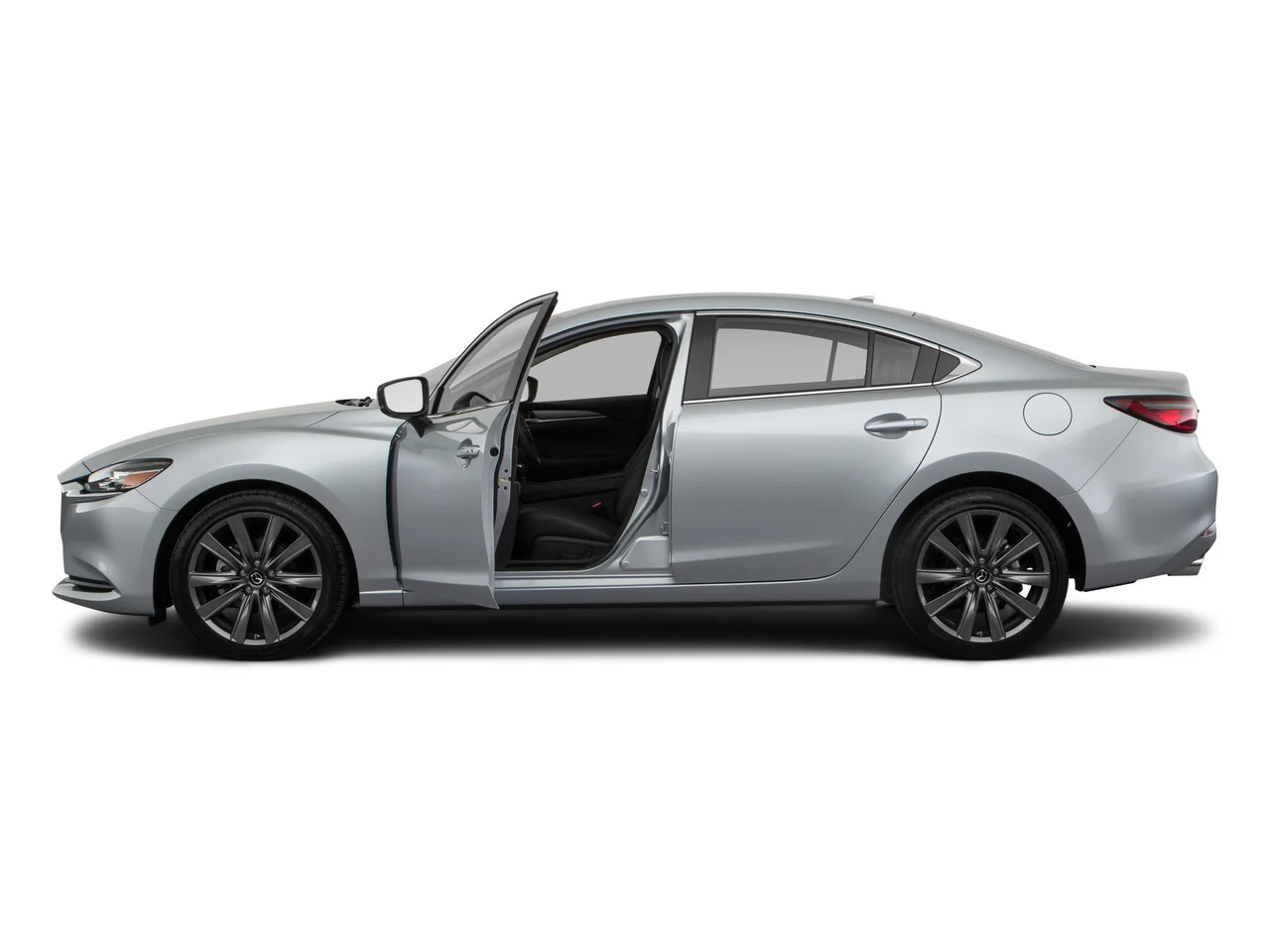
2018 Mazda 6
Mazda knows how to make a sedan so good that it will make you cringe on the mad craze of SUVs. A gorgeous outward design, a beautiful cabin that wouldn’t look out of place even on a luxury sedan, and dynamics that rivals those of pricey sports sedans; Say hello to the Mazda 6.
The Mazda 6 was extensively redesigned in 2014. Its upscale combination surpases its mainstream mid-size classification and surprisingly affordable price tag.
Over its eight-year lifespan, the third-generation Mazda 6 (2014 – 2021) received numerous revisions and improvements. The most recent transformation occurred in 2018, introducing refinements in the 6’s aesthetics, driving experience, and overall ambiance.
One of the standout additions was the introduction of a turbocharged 2.5-liter four-cylinder engine, elevating the Mazda 6’s performance credentials. This new engine option complemented the existing naturally aspirated 2.5-liter four, which also received a slight boost in power. Mazda also made notable strides in reducing interior noise levels.
The Mazda 6 serves as a reminder that performance figures alone don’t always paint the full picture. While it may not hold the title for the most powerful, it has Mazda’s driving athleticism imprinted on it, which makes it the most enjoyable mid-size sedan to drive.
However, it’s important to note that the Mazda 6’s relatively firm suspension can veer towards the uncomfortably stiff side, especially on rough roads.
Pros:
- Classier appeal inside-out compared to its rivals
- Excellent driving dynamics
- Serene and quiet cabin ambiance
- Base engine returns good fuel economy
Cons:
- Turbo engine lacks charisma compared to rivals
- Ride quality isn't as comfortable
- Misses out on hybrid model or all-wheel-drive option
- Only Higher trim levels have access to top-tier options
Car Key Points:
- Third generation (2014-2021)
- Most fun to drive midsize family sedan
- Near-luxury interior
- A Top Safety Pick+
- Good’ol Manual (Up till 2018)
- Standard Apple CarPlay and Android Auto capability (2021)
- Base engine returns up to 38 MPG on the highway
17-inch alloy wheels
Cruise control
60/40-split rear seat
3.5-inch multi-information display
Four-speaker sound system
Bluetooth
5.8-inch touchscreen
Rearview camera
Voice commands
HD radio
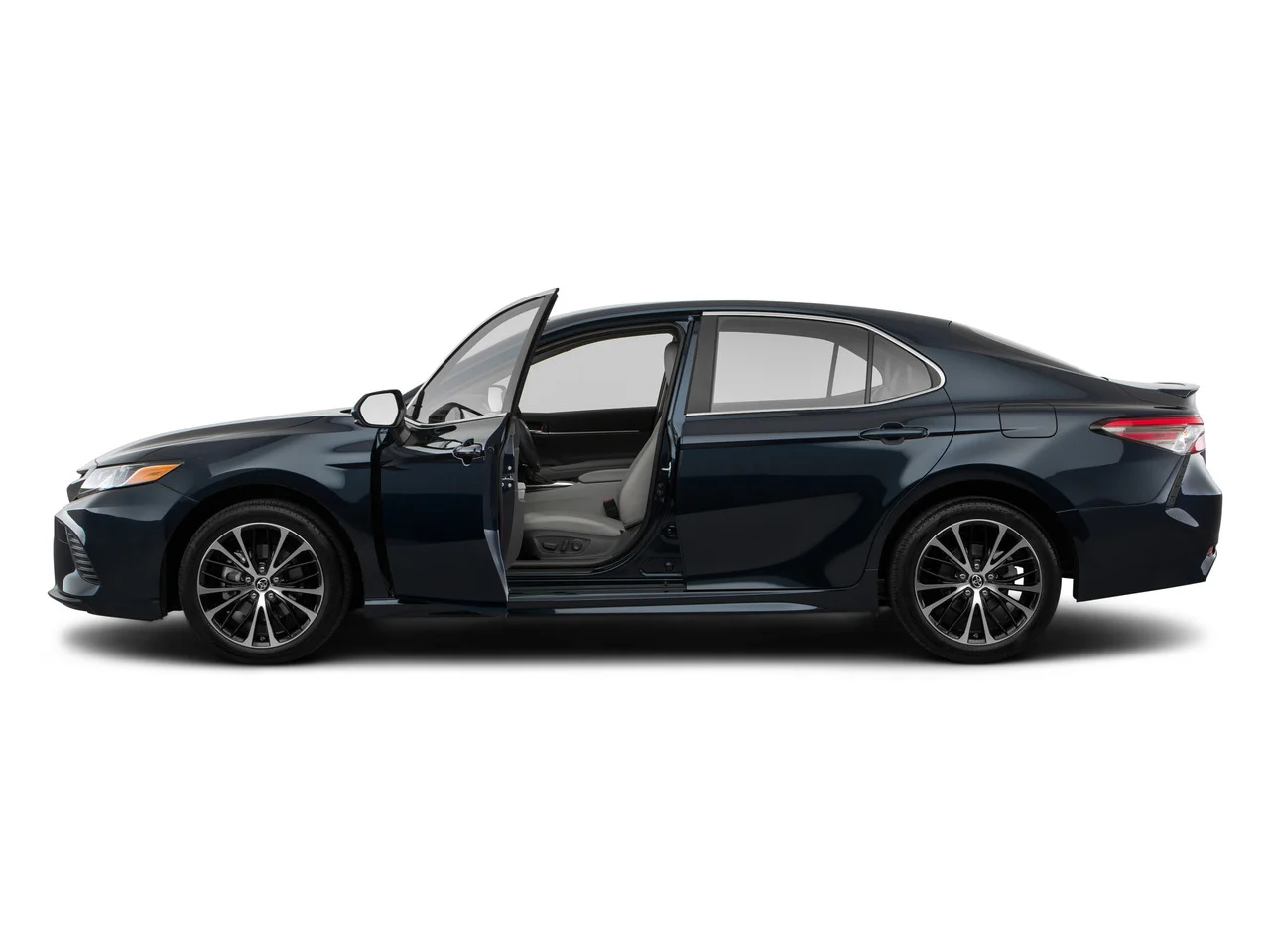
2018 Toyota Camry
The best selling sedan, the most reliable sedan, or the most fuel efficient midsize sedan – whatever you call it, the Toyota Camry has garnered generations worth of consumer trust and value. Toyota’s bread and butter car has been offering remarkable dependability, comfort, and fuel efficiency for decades now – a recipe for legendary owner satisfaction.
Despite attempts to pigeonhole the Camry as merely utilitarian, the eight-generation (2018 – 2024) model came out as a pleasant surprise, arguably the finest iteration of the Camry lineage yet.
Thoroughly redesigned, the new Camry sported a more stylish appearance inside out, improved powertrains, and became more fun to drive – who saw that coming? But all this, without losing a bit on the sensibility factor – a spacious cabin, an impressive list of standard safety tech features, and a hybridized version that achieves remarkable fuel efficiency.
For budget-conscious buyers, the 203-horsepower, 2.0-liter 4-cylinder models deliver adequate, if not exhilarating performance, coupled with above-average fuel economy. Else, the optional 302-hp 3.5-liter V-6 is the cream of the mid-size sedan powertrain lineup.
Pros:
- Powerful V-6 engine
- Fuel-efficient four-cylinder, and hybrid options
- Ample passenger space
- Enhanced ride comfort without the overly numb steering feel of past models
Cons:
- Lackluster Four-cylinder acceleration
- Interior material quality varies depending on the price
- Limited standard features
Car Key Points:
- 8th Generation (2018-Present)
- Best-selling sedan (20+ years)
- Velvety 301-hp V6
- Hybrid delivers over 50 mpg combined without compromising performance (208 horsepower)
- Top safety pick+
- Legendary Reliability
- Up to 41 mpg highway with the base gas model
16-inch steel wheels
Automatic LED headlights
Keyless entry
Height-adjustable driver seat
7-inch touchscreen infotainment
Rearview camera
Bluetooth
Six-speaker sound system
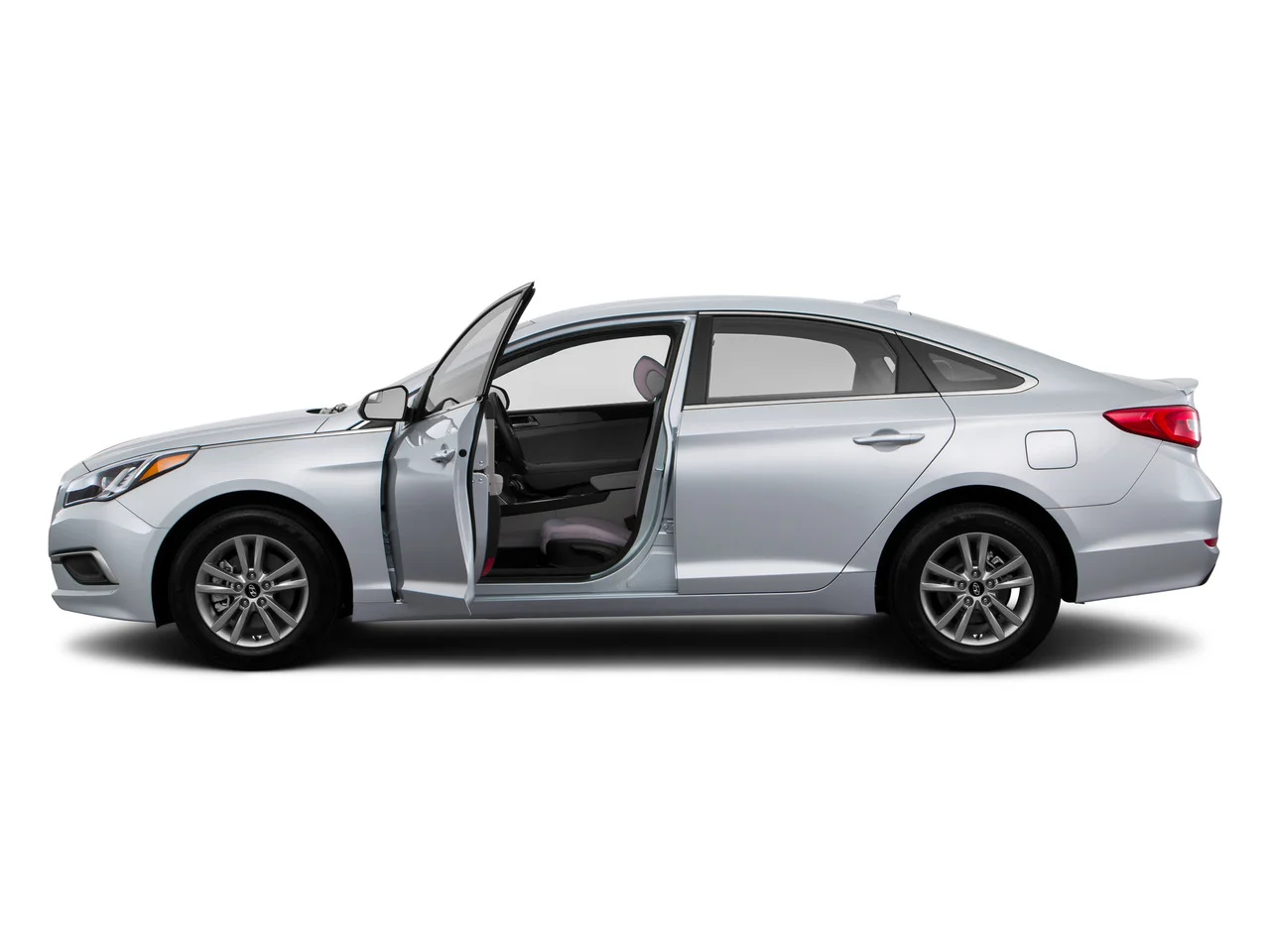
2016 Hyundai Sonata
The Hyundai Sonata is a mid-size sedan that provides everything you need without breaking the bank. Among the various generations of Sonata, the seventh one (2015-2019) stands out as a value champ and is our top choice when considering a used Sonata.
It’s roomy, easy-to-live-with, and offers high feature content for the money. What truly sets the used Hyundai Sonata apart is the remarkably serene and sophisticated cabin experience it offers. Yes, it isn’t on the higher end of the spectrum in terms of driving feel, especially considering rivals such as the Mazda 6, Honda Accord, and the Chevrolet Malibu. However, it excels at gliding over road imperfections with smooth damping and a well-controlled ride quality that never feels jarring, no matter the trim level.
Hyundai provides the Sonata with a total of five distinct powertrain options, including a pair of hybrid variants—one of them being a plug-in hybrid. The base 185-horsepower 2.4-liter four-cylinder engine provides adequate but not exactly thrilling acceleration, paired with a smooth six-speed automatic transmission. On the other hand, the 178-horsepower 1.6-liter turbocharged engine found in the “eco” trim stands out as our recommended choice among the gasoline powertrains. It’s even better than the available turbo 2.0-liter four-cylinder which disappoints despite having 245 hp.
The cabin of the Sonata does have some hard plastics but is well laid-out and offers a long list of standard features for the price including a 7-inch touchscreen with Apple CarPlay and Android Auto on 2016 and later models.
Pros:
- Wealth of features for the price
- Quiet and spacious interior with comfortable seating for long trips
- Range of powertrains to choose from.
- Unrivaled ten-year engine warranty
Cons:
- 2.0-liter turbo has disappointing acceleration
- Sweeping roofline design compromises rear headroom
- Some substandard interior materials
- Base model lacks many desirable features
Car Key Points:
- Seventh generation (2015-2019)
- Top Safety Pick+
- 5 Powertrain options
- Ten year engine warranty
- Value for money
- Serene cabin experience
- Standard 7-inch touchscreen
16-inch alloy wheels
Automatic headlights
LED running lights
Cruise control
Heated mirrors
Tilt-and-telescoping steering column
60/40-split rear seatback
7-inch touchscreen display
Blue Link telematics system
Android Auto and Apple CarPlay
Bluetooth
Six-speaker sound system
Satellite radio
Rearview camera
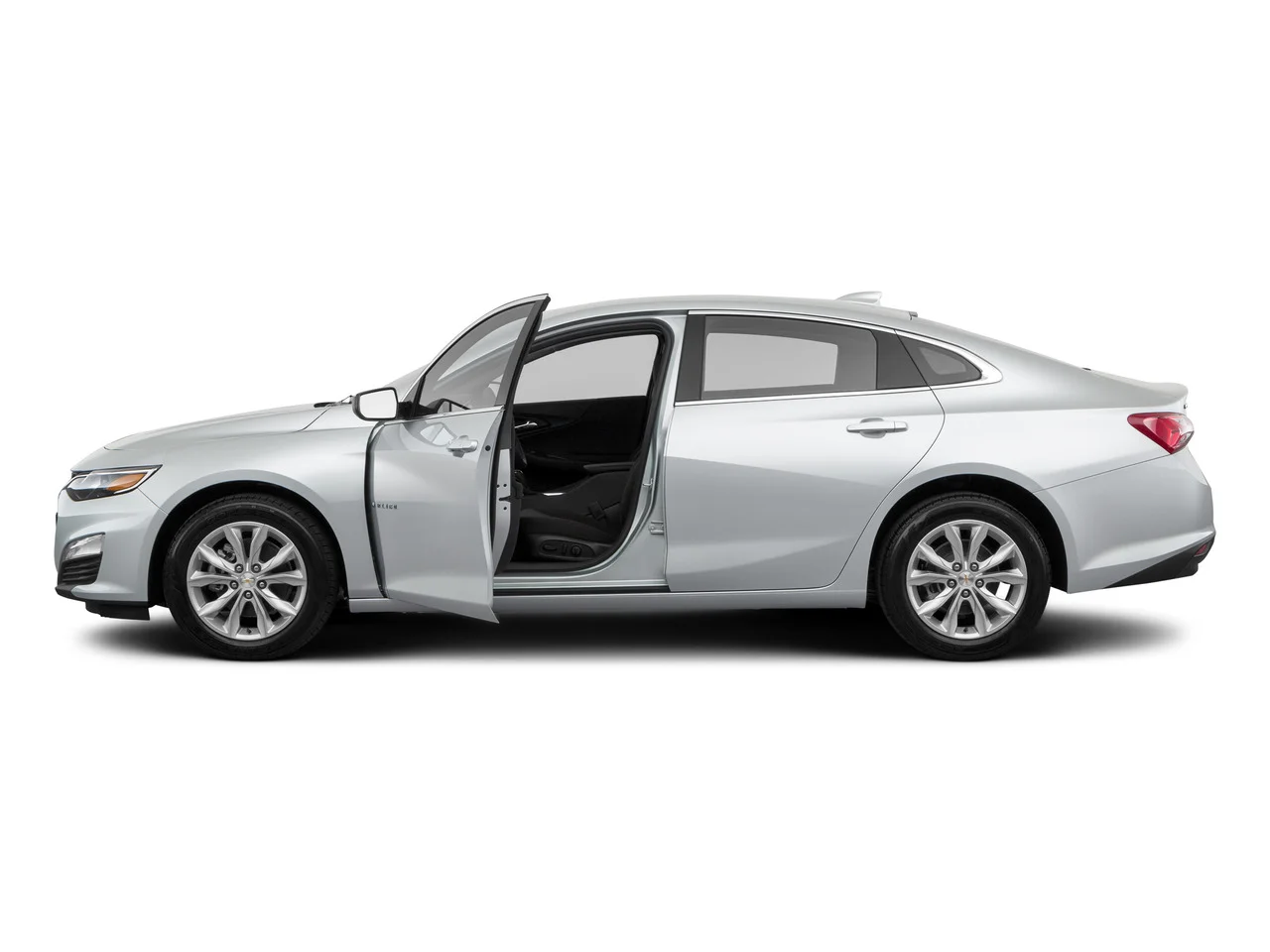
The Chevy Malibu took everyone by surprise with its full redesign in 2016. The ninth-generation Malibu (2016 – Present) goes above and beyond the typical mid-size sedan expectations. Beneath its striking exterior, it houses a spacious and comfortable cabin equipped with cutting-edge technology. And yes, when it comes to reliability, the Malibu is a solid choice. J.D. Power awarded the 2019 edition an estimated reliability score of 87 out of 100.
But where the Malibu really surprises is in driving athleticism. Paired with the perky 250-hp turbocharged 2.0-liter four-cylinder, the Malibu carries a sense of driving personality that most family sedans lack. The Malibu manages to strike a rare balance between a comfortable ride and an enjoyable driving experience. The cabin remains tranquil, and the suspension system adeptly absorbs bumps and shocks.
For those mindful of fuel consumption, Chevy offered a fuel-efficient hybrid option until 2019. This variant features a 1.8-liter four-cylinder engine paired with a 1.5-kWh lithium-ion battery pack. It delivers a smooth and refined performance, capable of cruising at speeds of up to 55 mph on electric power alone and achieving an impressive 48 mpg combined.
In terms of safety, all Malibu models perform admirably in crash tests. And when it comes to tech and creature comforts, just look past the base trims, and you find a wealth of niceties. Overall, a used Chevrolet Malibu is a competent mid-size car with a lot of value and no major flaws.
Pros:
- Universally appealing aesthetics
- Comfortable and spacious interior.
- Loaded with the latest technology
- Impressive ride and handling for a family sedan
- Hybrid is both brisk and thrifty
Cons:
- 1.5-liter engine lacks spirited acceleration
- Limited outward visibility
- Can’t disable the auto stop/start function
- Lower trim levels miss out on desirable options
Car Key Points:
- Ninth Generation (2016-Present)
- Refreshed for 2019
- Hybrid offers up to 47 MPG combined
- Perky 2.0 Liter Turbo
- Satisfying Ride and Handling Balance
- Plethora of niceties except basic trims
- Easy-to-use infotainment system
- Standard 8-inch touchscreen system with Apple CarPlay and Android Auto
16-inch steel wheels
Keyless entry and go
Tilt-and-telescoping steering wheel
8-inch touchscreen system
Apple CarPlay and Android Auto
OnStar
Six-speaker audio system
Cruise control
Backup camera

2019 Kia Optima
The Kia Optima may not be the absolute epitome of refinement, accommodation, or driving exhilaration among used mid-size sedans, but it excels at delivering outstanding value.
Following its redesign in 2016, the Kia Optima marries attractive aesthetics with an impressive array of standard features, including driver assistance technologies. What sets it apart further is an unparalleled powertrain warranty and high safety ratings, all offered at an accessible price point.
Notably, the Optima boasts one of the most diverse model lineups in its class, featuring a whopping five separate powertrains, including two hybrid options.
Among the gasoline-powered engines, the base variant houses a 185-horsepower naturally-aspirated 2.4-liter four-cylinder, while LX models come equipped with a 178-horsepower 1.6-liter turbocharged four-cylinder. While none of them may ignite the excitement meter, they get the job done efficiently. The most powerful Optima, the SX trim, has a 2.0-liter four-cylinder with 245 horsepower but offers lesser excitement and consumes more fuel than similar engines in rivals.
When it comes to technology and convenience features, the Kia Optima offers exceptional value for your money, outshining many competitors. If you’re contemplating a used model year, even opting for the more recent 2019 models is a wise choice. Not only will it result in fewer miles on the odometer, but you’ll also enjoy improved standard features with each passing year.
For example, in 2018, Kia made a significant upgrade by equipping the Optima with a new 7.0-inch touchscreen featuring Apple CarPlay and Android Auto compatibility. In 2019, the Optima underwent a modest refresh, including styling updates and the inclusion of several driver-assistance features as standard on non-hybrid models.
Pros:
- Handsome exterior and interior design
- Wide range of engine options
- Quiet cabin
- Plenty of convenience and luxury features for the price
Cons:
- Uninspired driving performance as well as fuel efficiency
- Rival hybrids are more fuel-efficient Sloping roofline limits rear headroom
- Steering feels numb
Car Key Points:
- Fourth generation (2016-2020)
- Top Safety Pick+
- 5 Powertrain options
- Ten year engine warranty
- Value for money
- Serene cabin experience
- Turbocharged 1.6-liter engine is our pick among gas models
- Standard 8-inch touchscreen infotainment system with smartphone integration
- Standard advanced safety equipment
16-inch alloy wheels
Automatic headlights
Heated mirrors
Height-adjustable front seats
8-inch touchscreen
Apple CarPlay, Android Auto
Bluetooth
Six-speaker audio system
HD and satellite radio
Cruise control
60/40-split rear seat
Rear parking sensors
Rearview camera
Blind-spot monitoring with rear cross-traffic alert
Lane keeping assist
Driver attention monitoring
Lane departure warning
Forward collision warning

